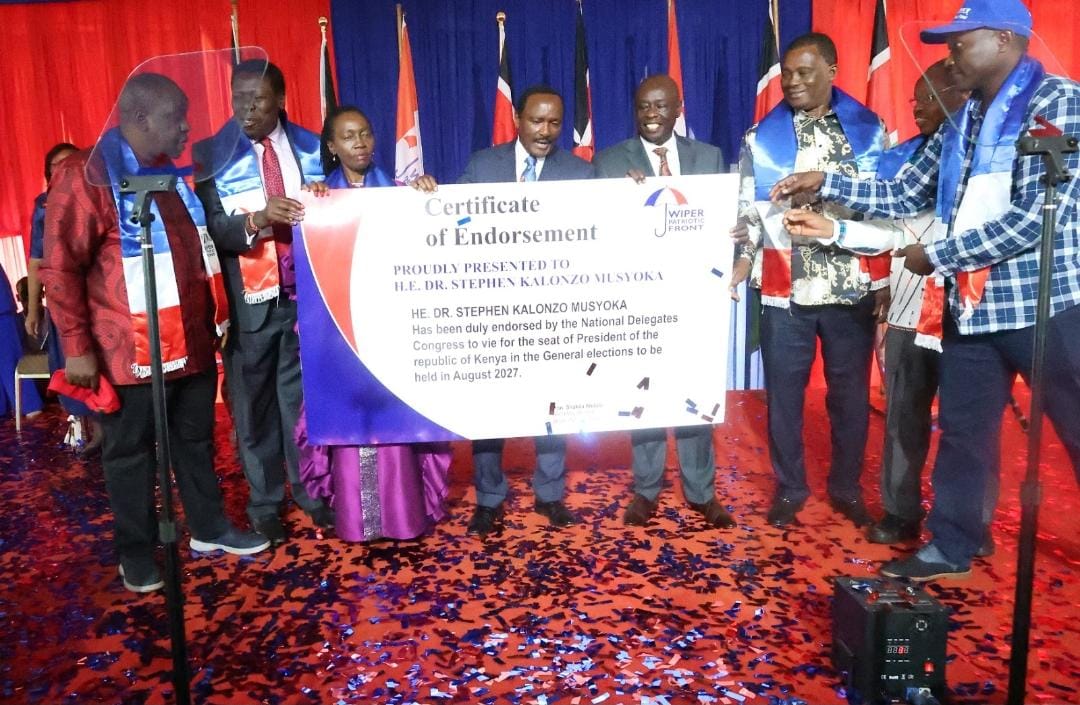
KEY FACTS:
- 76% decline in monitored wildlife populations across Africa, representing mammals, birds, amphibians, reptiles, and fish.
- Habitat loss and degradation, overexploitation, climate change, pollution, invasive species and disease are the most reported threats to wildlife populations in Africa.
- 85% decline of global freshwater populations–suffered the heaviest declines–followed by terrestrial (69%) and marine ecosystems (56%), reflecting the increasing pressures placed on rivers, lakes, oceans, and wetlands driven by overgrazing, overfishing, land-use change, deforestation, pollution and water abstraction.
- Report reveals a ‘system in peril’ as Africa faces dangerous, irreversible tipping points driven by nature loss and climate change.
- WWF-Kenya: The next five years are crucial for the future of biodiversity, but we have the power − and opportunity − to change the trajectory. We have five years, by 2030, to contribute significantly to the future of life on Earth by working with all stakeholders to support the National Government to deliver on its ambitious commitments to the global goals by transforming our food and energy systems, greening our finance and restoring nature in Kenya in a fair, sustainable and inclusive way.
NAIROBI, Kenya (10 October 2024) — World’s biodiversity is under threat as WWF’s Living Planet Report 2024 reveals significant declines in the average size of populations of wildlife across the globe and Africa. According to the report, the world has experienced a decline of 73% with Africa’s at 76% in the size of monitored vertebrate wildlife populations between 1970 and 2020, driven primarily by habitat loss, overexploitation, pollution, and the impacts of climate change. This alarming trend highlights the urgent need for transformative action to safeguard Africa’s natural ecosystems and the livelihoods that depend on them.
Despite the alarming overall decline in species population shown in the Living Planet Index, the population of priority species in Kenya such as the African lion, the African elephant, and the black rhino have stabilized or increased as a result of effective conservation efforts. The rebounding of the black rhino in Kenya, from the 400s individuals recorded in the 1980s to the current 1,004 in 2023 is a huge milestone for this critically endangered species.
However, the report warns that the continued degradation of ecosystems could push the continent past critical tipping points without immediate interventions. As ecosystems cross these thresholds, their ability to support both wildlife and sustainable development becomes compromised, with severe consequences for food security, water availability, and climate resilience.
Based on an examination of the science, the report underlines the urgency of the world in meeting global goals on nature, climate and sustainable development by 2030. To achieve this, it presents proven solutions to transform conservation and the energy, food and financial systems in a fair and inclusive way.
Mohamed Awer, Chief Executive Officer, WWF-Kenya, said: “Kenya is at the forefront of making significant contributions to fight climate change and restore nature, having committed to the Global Biodiversity Framework and the Paris Agreement among other global and national commitments. The country’s National Biodiversity Strategies and Action Plans (NBSAPS) make ambitious targets present a unique opportunity to mobilize capacity and financial resources in a coordinated manner to help restore ecosystems, enhance sustainable use of biological diversity and champion fair and equitable benefits sharing.
The redoubling of the nation’s ambition to the Bonn Challenge through the 15 billion commitment to restore 10.6 million hectares of degraded landscapes, is a step in the right direction.
The stabilizing populations of priority species offer a shimmer of hope that consistency in a truly whole-of-society approach and collaborative interventions will not only help save species from extinction but also ensure they thrive. However, if we are to stop nature loss at the scale needed to avoid global and devastating tipping points, climate finance must flow from the global level to nations most-affected for their effective implementation of national commitments and action plans, and to the grassroots to build the resilience of indigenous and local communities bearing the biggest brunt of nature loss and climate change.”
Jackson Kiplagat, Head of Conservation Programmes at WWF-Kenya, stated: “Flagship species such as the African lion, the African elephant, and the black rhino remain endangered but there is hope that the continued interventions by stakeholders will stop decline and stabilize their populations. The rebounding of the black rhino in Kenya, from the 400s individuals recorded in the 1980s to the current 1,004 in 2023 is a huge milestone for this critically endangered species. This is a clear testament of the power of concerted abd consistent efforts by all stakeholders, from the global to the local level.
The implementation of targeted recovery and action plans will ensure that these species do not become extinct, but rather thrive.”
ENDS
Notes to Editors
- The Living Planet Index shows an average 73% decline in monitored wildlife populations with a decline in Africa at 76%, which include mammals, birds, amphibians, reptiles, and fish. The percentage change reflects the average proportional change in monitored animal populations across the continent, not the number of individuals lost or species extinctions. The percentage change in the index reflects the average proportional change in monitored animal population sizes at sites around the world, not the number of individual animals lost, nor the number of populations lost.
- The LPR 2024 is the 15th edition of WWF’s biennial flagship publication. The full report and summary versions, along with B-roll footage and images, are available HERE.
- Please note that successive iterations of the LPI are not directly comparable as they contain different sets of species. It is also important to note the significance of the 1970 baseline for the various regions monitored. For example, in both Europe and North America, large-scale impacts on nature were already apparent before the start of the index in 1970, explaining why there is less of a negative trend. North America registered an average decline of 39%, while Europe and Central Asia registered a decline of 35%.
- Energy and food systems are the main drivers of climate change and nature loss. Fossil fuels contribute approximately 70% of greenhouse gas emissions. Food production is the leading cause of habitat loss, accounts for 70% of water use, and is responsible for over a quarter of greenhouse gas emissions.
- Nature-based solutions harness the power of nature to boost natural ecosystems, biodiversity, and human well-being and address major societal issues, including climate change. For example, regenerative farming and the restoration of forests, wetlands, and mangroves can boost carbon storage, enhance water and air quality, improve food and water security, and help protect against erosion and flooding.
- Countries are due to submit revised national biodiversity strategies and action plans (NBSAPs) aligned to the Global Biodiversity Framework before biodiversity COP16 in Cali, Colombia (21 October – 1 November 2024). WWF is urging countries to ensure these are ambitious and comprehensive and to boost biodiversity finance.
- Under the Paris Agreement countries must present new climate plans (Nationally Determined Contributions – NDCs) in 2025, providing a blueprint for how they will contribute to limiting warming to 1.5oC. These plans should include roadmaps for equitably phasing out fossil fuels and transforming food systems. At COP29 in Baku, Azerbaijan (11 November – 22 November), WWF hopes to see the agreement of a new, ambitious climate finance goal to meet the mitigation and adaptation needs of developing countries.
World Wide Fund for Nature-Kenya (WWF-Kenya) is an independent, locally registered, non-governmental conservation organization. Since 1962, WWF-Kenya, an affiliate of WWF International, has been collaborating with communities, the government, civil society, and the private sector to create a healthy natural environment supporting people and sustainable development in Kenya. Our global mission is to stop the degradation of the Earth’s natural environment and to build a future in which humans live in harmony with nature, by conserving the world’s biological diversity, ensuring that the use of renewable natural resources is sustainable, and promoting the reduction of pollution and wasteful consumption.
Founded in 1826, ZSL is an international conservation charity, driven by science, working to restore wildlife in the UK and around the world; by protecting critical species, restoring ecosystems, helping people and wildlife live together and inspiring support for nature. Through our leading conservation zoos, London and Whipsnade, we bring people closer to nature and use our expertise to protect wildlife today, while inspiring a lifelong love of animals in the conservationists of tomorrow.






Leave a Reply